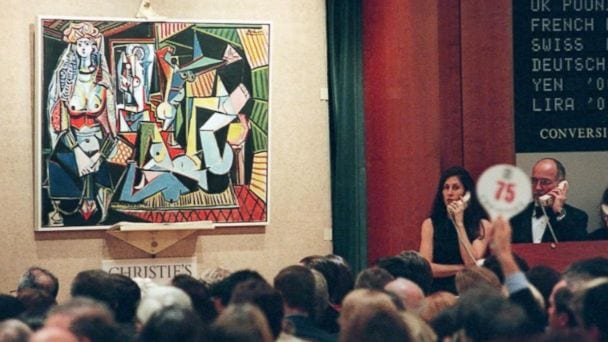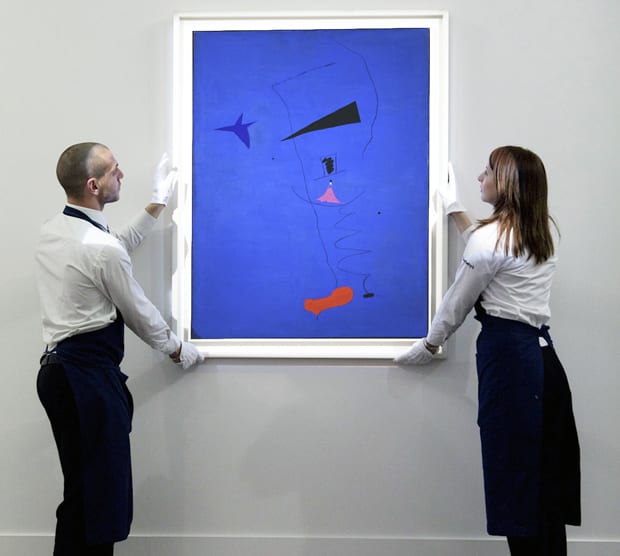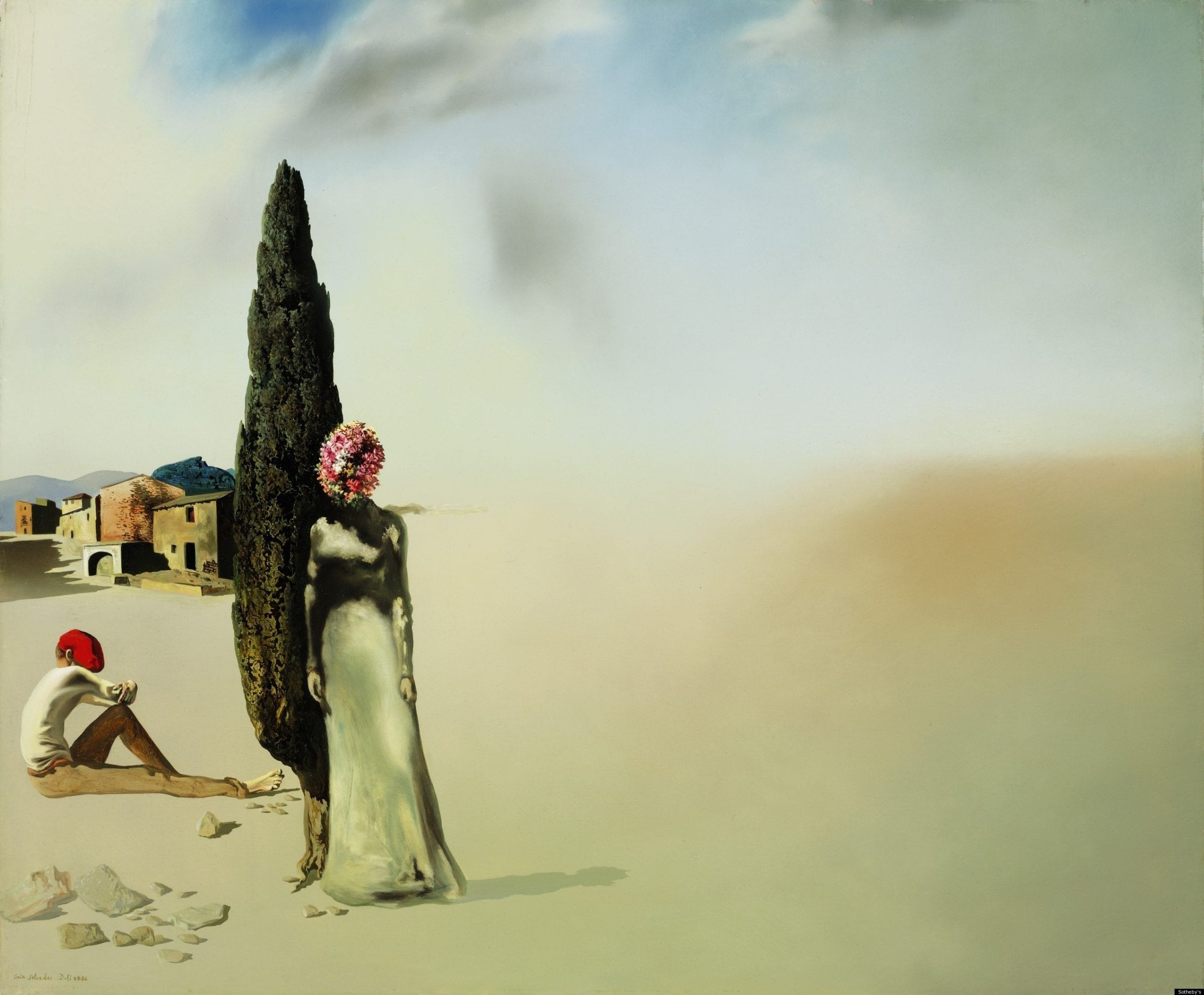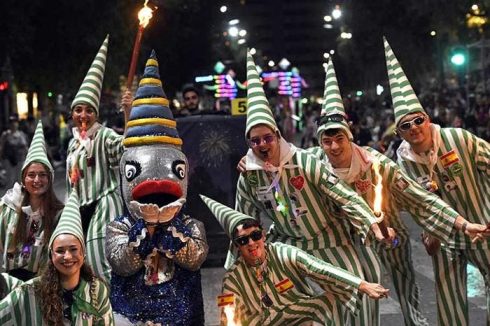
SPANISH art expert Javier Portús has attributed a painting from the Metropolitan Museum in New York to Velázquez.
Previously thought to be the work of the Spanish master’s son-in-law, the Caballero Marquand’s new provenance ups the Met’s Velázquez collection to six pieces, while adding huge value to the painting itself.
Sale prices can be misleading when it comes to assessing real market value and artistic worth but the numbers are nonetheless telling. Check out our gallery of record-selling Spanish masterpieces by Spain’s most renowned artists.
READ MORE:
- Legendary painter Mark Ryden among dozens of artists at NEW Malaga pop art show, amid gallery staff contract row
- REVEALED: New painting by Spain’s Velazquez unearthed after previously being attributed to his son-in-law
- Invaluable 16th Century Titian painting torn after falling from wall in Madrid
Pablo Picasso (1881-1973)

The Malaga-born maestro is the priciest artist hands-down, not only in Spain but the world.
Les Femmes d´Algers (Version O) set a world record price when it was sold for US$179 million (€125 million) at Christie’s New York in 2015.
It remains one of the top-selling paintings of all times. Picasso completed it in 1955 as part of a series of 15 paintings and numerous drawings based on Eugene Delacroix’s Women of Algiers. It was acquired privately by former Qatari Prime Minister Hamad bin Jassim, but you can see other versions in museums around the world. Version L is held by the Berggruen Museum in Berlin, and Version N by the Mildred Lane Kemper Art Museum at Washington University in St. Louis, Missouri.
Picasso´s second most expensive painting is Le Rêve (¨The Dream¨), fetched $155 million (€113 million) at a private sale in 2013. The 1932 portrait represents the artist’s mistress Marie-Thérese Walter, who was 22 at the time.
And the list of record-breaking sales goes on … Garçon à la pipe sold for $104,2 million in 2004, Nude, Green Leaves and Bust ($106.5 million, 2010) and Dora Maar au chat ($95.2 million, 2010) to name but a few.
Guernica, Picasso’s most famous work housed at Madrid’s Reina Sofia Museum, has been valued at around $200 million dollars, although it has never been sold and is considered too fragile to move.
Joan Miró (1893-1983)

Far behind Picasso but still pretty pricey, this Barcelona-born Catalan artist moved to Paris in the 1920s and joined the Surrealist movement. Painting (Blue Star), (1927), is a key work from his surrealist period, in which some of his emblematic symbols float amidst the intense blue he described as ‘the colour of my dreams’. It was sold in 2012 to an anonymous buyer for £23.5 million €30 million) at Sotheby’s London. At the time the auction house’s head of Impressionism and Modern Art, Helena Newman, said the high figure represented an ‘unprecedented demand’ for the best of 20th century art.
Miró’s second top-selling work, Painting-Poem (1925), also from his surrealist period, sold at an Impressionist and Modern sale at Christie’s London in 2012 for £16,6 million (€21 million).
Salvador Dalí (1904-1989)

The second best-selling Spanish surrealist artist in the money stakes for his Portrait of Paul Eluard is also a Catalan. Dalí met French poet Eluard and his then-wife Gala in 1929 and, having been commissioned by her husband to paint her portrait, promptly began an affair with her. The pair eventually got married in 1934. Eluard and Gala’s daughter inherited the painting but sold it in 1999. It was resold in 2011 at Sotheby’s London for €16 million.
A year later Dalí’s Printemps necrophilique (1936) went under the hammer for $16,3 million (€12,5 million) at Sotheby’s New York. The painting was originally owned by the fashion designer Elsa Schiaparelli, who often collaborated with Dalí. Simon Shaw, then head of Impressionist and Modern Art for the auction house, noted: “Surrealism continues to present exciting opportunities for collectors, given the wide range of material available at varying price points … and the fact that great masterworks remain in private hands.”
Diego Velázquez (1599-1660)

This Sevilla-born artist is most famous for his Baroque masterpiece, Las Meninas, painted in 1656. It is safe to say, however, that this world treasure will not be on sale anytime soon. It’s so valuable that Madrid’s Prado museum will not even lend it out for exhibition.
However his Retrato de una niña or¨Joven Inmaculada was sold in 2017 to an anonymous Spanish buyer in Abalarte, Madrid for €8,7 million. The work was attributed to Velázquez by Richard de Willermin, an expert in 17th and 18th century European art, after an x-ray revealed a crown of stars hidden by an overpaint.
“There is an unquestionable connection through the clothing and the technique. The girl stands with a crown of stars, as with the Immaculate Conception at the National Gallery”, said Willermin. He also suggested that it was an early work by Velazquez as a young apprentice, before he became painter to the Spanish court.
Don Pedro de Barberana y Aparregui has also been attributed to Velázquez. Probably painted between 1631 and 1633, the Kimbell Art Museum in Fort Worth, Texas acquired it in 1981 for a reported $6 million.
Francisco Goya (1746-1828)

Last but not least on our list is this Aragonese Romantic artist who was appointed royal painter to the Spanish court in Madrid at the age of 40. The theme of bullfighting was a source of inspiration throughout his life, featured in a 1793 series of prints called Bullfighting and, during his final years in France, in a set of four lithographs, known as Bulls of Bordeaux. (The Goyesca bullfights in Ronda in September are an annual homage to the artist.)
His priciest painting also takes the corrida as its theme. Bullfight Suerte de Varas which he painted in Paris in 1824 captures the moment when the picador confronts the bull (known as the suerte de varas). It was sold at Sotheby’s London in 1992 for $7.9 million and whisked off to the Getty Museum in Malibu, California.
Goya’s second best-seller is a drawing from his personal sketchbooks – ‘journal-albums’, as one expert called them, in which each drawing is an entree to a story complete in itself. A job lot of 105 drawings were sold at auction in Paris in 1877 after which they were dispersed into private collections lost track of. Bajan riñendo (or Visión de bajar riñendo) was one such ‘lost drawings’ recently rediscovered in a Swiss family’s collection. They sold it through Christie’s London in 2008 for £2,28 million (€ 2.87 million) – more than double its valued worth.











